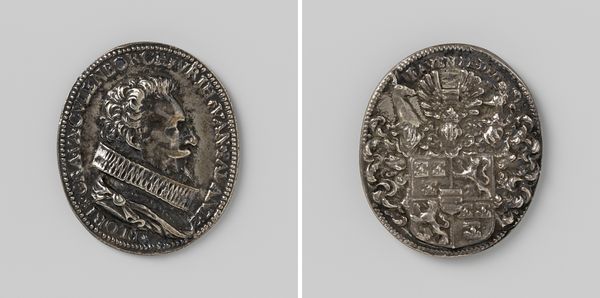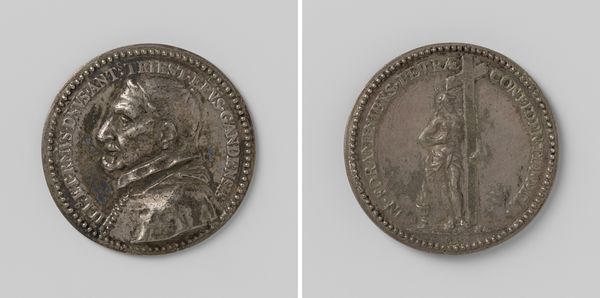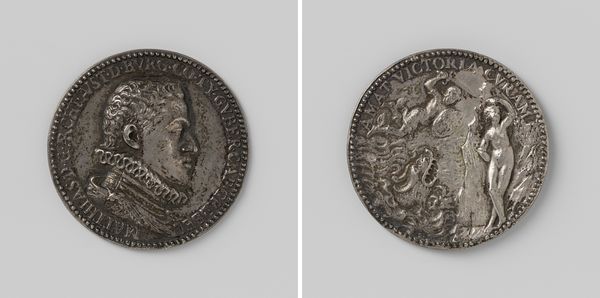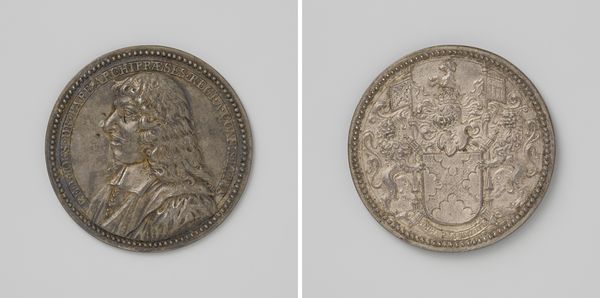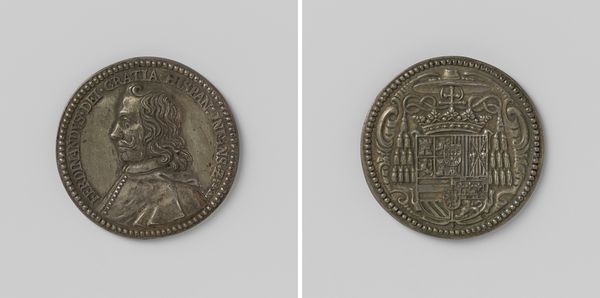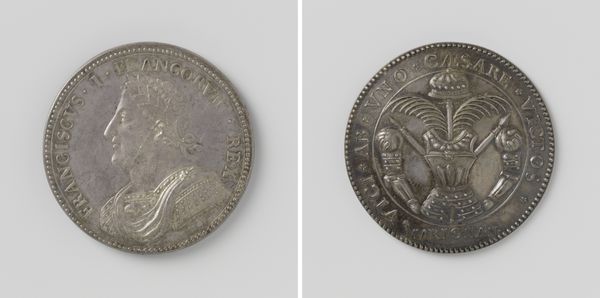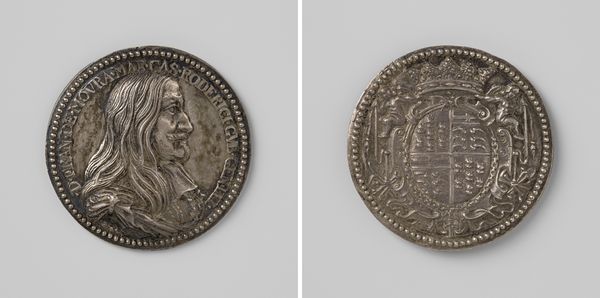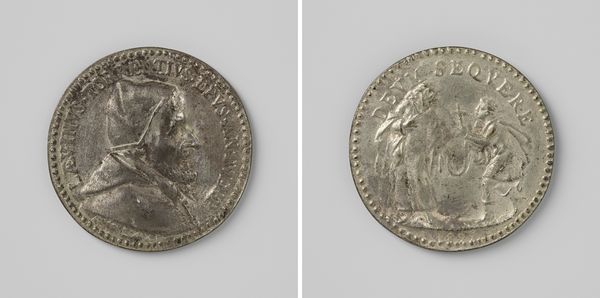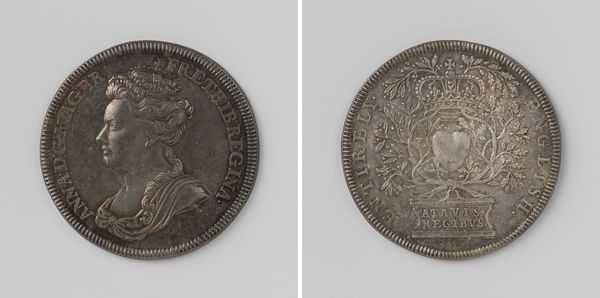
metal, relief, sculpture
#
portrait
#
metal
#
sculpture
#
relief
#
11_renaissance
#
sculpture
Dimensions: diameter 4.3 cm, weight 26.56 gr
Copyright: Rijks Museum: Open Domain
Curator: This intricate metal relief, created around 1601 by Jacques Jonghelinck, portrays Karel Filips van Croy, markgraaf van Hoorne. Editor: The coolness of the metal lends it a rather austere, almost detached air, doesn't it? You feel that in the tight composition, the stern profile… a deliberate choice, I think. Curator: Indeed. Jonghelinck meticulously renders every detail, from the lace ruff to the texture of his beard. Note how the composition draws your eye towards the precise delineation of line, shadow, and texture, contributing to the subject’s imposing presence. Editor: Absolutely. It speaks to power. Karel Filips, as a high-ranking nobleman, surely had specific intentions regarding the representation of his likeness. It’s hard to look at this and not consider the history of aristocratic portraiture, its reliance on the visual markers of status and lineage to broadcast a specific message. Curator: Precisely! The inscription around the perimeter also lends weight to that status. Furthermore, consider the obverse side depicting his coat of arms – further emblazoned upon its surfaces as a signifier. Editor: The heraldry on the reverse reinforces that meticulously constructed image. By presenting the insignia on the inverse the work emphasizes and reaffirms Croy’s authority through heraldic symbolism. What can you make of the metal itself? Curator: It lends a permanent quality to the subject; bronze signifies durability, endurance, suggesting timeless legacy. It's a choice that aligns perfectly with the portrait's intention. Editor: And in contrast to painting, for instance, this metal rendering has the power to last; to be both an aesthetic object and an enduring artifact in material form for posterity. These medals became more popular in that day... were they popular during the Renaissance and why? Curator: These relief portraits experienced a boom in popularity, largely in correlation with Renaissance interest in the classical world... The rise in bronze or metal works, I posit, reflects both Renaissance ideals and aristocratic ambition. Editor: Well put. Overall, both the chosen medium, the calculated composition, the inclusion of the coat of arms—all point to this object functioning as more than just a pretty picture; it's an active assertion of identity and power. Curator: Agreed, and considering how precisely Jonghelinck presents all these aspects; both artist and subject together seem fully conscious of this aim. Editor: It’s fascinating how much context can be revealed through analyzing such seemingly small, precious objects!
Comments
No comments
Be the first to comment and join the conversation on the ultimate creative platform.

